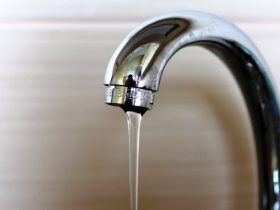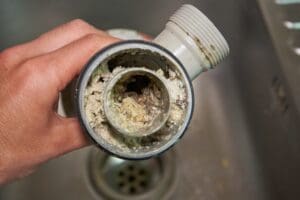We have uncovered this great article on Dealing with Low Water Pressure in Your Home directly below on the internet and decided it made sense to share it with you on my blog.

Low tide stress in your home can be a frustrating trouble, impacting everything from bathing to cleaning recipes. If you're experiencing weak water flow, there are a number of feasible causes and services to check out. In this overview, we'll review usual factors for low water stress and practical actions to attend to the concern efficiently.
Intro to Low Tide Stress
Low water stress happens when the circulation of water from your faucets, showers, and other components is weak than common. This can make daily jobs much more challenging and much less efficient. Understanding the reasons for low water stress is essential to locating the right option.
Typical Root Causes Of Low Tide Pressure
Pipeline Obstructions
Gradually, pipelines can come to be clogged with natural resource, debris, or particles, limiting the circulation of water. This is a typical problem in older homes with galvanized steel pipes.
Rust
Rust within pipes can cause leakages and minimized water pressure. Rust accumulation can restrict water circulation, particularly in maturing plumbing systems.
Faulty Pressure Regulatory Authorities
Stress regulatory authorities are accountable for maintaining constant water pressure in your house. If they malfunction, it can result in low tide stress or unequal flow throughout your house.
Local Water Issues
Sometimes, the problem lies outside your home. Community water system issues, such as main line leakages or upkeep work, can temporarily minimize water pressure in your location.
Exactly How to Diagnose Low Water Stress
Inspecting Faucets and Fixtures
Begin by testing the water pressure at different faucets and components throughout your home. If the problem is separated to details areas, it might show localized troubles.
Checking Pipelines
Check visible pipes for indicators of leaks, corrosion, or blockages. Take notice of any type of uncommon audios, such as banging or rattling pipelines, which might show concerns within the plumbing system.
Consulting with a Plumber
If you're not able to identify the source of low water stress, take into consideration working with an expert plumber to conduct an extensive inspection. They can determine underlying issues and advise proper services.
DIY Solutions to Deal With Low Tide Pressure
Cleansing Aerators and Showerheads
Mineral deposits can gather in aerators and showerheads, reducing water circulation. Get rid of and clean these components on a regular basis to boost water stress.
Flushing Hot Water Heater
Debris buildup in the hot water heater can restrict circulation and decrease efficiency. Flushing the storage tank occasionally aids eliminate debris and keep optimum performance.
Checking Stress Regulator
Ensure that the pressure regulatory authority is operating correctly. Changing or changing the regulatory authority can aid recover proper water stress throughout your home.
Clearing Up Clogs in Pipes
For small obstructions, attempt using a plumbing snake or chemical drainpipe cleaner to clear blockages in pipelines. Beware when utilizing chemicals and adhere to safety and security guidelines.
When to Call a Professional Plumber
If DIY efforts fail to resolve the issue or if you suspect significant plumbing problems, it's ideal to seek support from a certified plumber. They have the proficiency and devices to address complex problems securely and efficiently.
Preventive Measures to Keep Water Stress
Normal Upkeep
Set up regular upkeep for your plumbing system to prevent problems such as deterioration, leaks, and blockages. Addressing minor troubles early can aid prevent more significant fixings later on.
Setting Up a Pressure Booster
Take into consideration installing a pressure booster pump to improve water pressure in areas with constantly low circulation. This can be specifically useful for multi-story homes or buildings with high-demand fixtures.
Monitoring Water Usage
Bear in mind water usage practices and stay clear of overtaxing the plumbing system. Basic modifications, such as astonishing showers and laundry loads, can help preserve ample water stress.
Verdict
Dealing with low water stress can be irritating, but determining the underlying causes and applying suitable options can bring back optimal circulation throughout your home. Whether it's cleaning up aerators, checking pipelines, or talking to a plumber, taking aggressive steps can ensure a steady supply of water for your everyday needs.
FOUR WAYS TO FIX LOW WATER PRESSURE NOW
Turning on a shower or faucet only to find the water comes out in a sad, slow drizzle is never a good feeling. How exactly are you supposed to wash a pan or take a quick shower when it takes 10 minutes just to rinse off a little soap? The good news is that when your water pressure is bad, there's always a cause: typically one that can be easily fixed. Here are some of the most common causes of low pressure and what you can do to fix the issue:
DEBRIS AND MINERAL DEPOSIT BUILDUPS
If you notice low water pressure from just one or two of the fixtures in your house, the problem likely has to do with debris buildup. Water is full of minerals and other debris, all of which can accumulate in your pipes and on your fixtures. This can cause a blockage that affects how much water flows through. To fix this, try filling a small plastic bag with white vinegar, and use a rubber band to hang it around your showerhead or faucet. Let the head of the fixture soak for a few hours, and the vinegar should loosen the deposits.
WATER LEAKS
Leaks are another common cause of low water pressure. If water is flowing out of your plumbing through a hole or crack before it can reach your fixture, the pressure coming out of the faucet or showerhead will be lower. A plumbing professional is your best bet for finding and repairing a leak in your water supply pipes.
Leaks are another common cause of low water pressure. If water is flowing out of your plumbing through a hole or crack before it can reach your fixture, the pressure coming out of the faucet or showerhead will be lower. A plumbing professional is your best bet for finding and repairing a leak in your water supply pipes.
FOUR WAYS TO FIX LOW WATER PRESSURE NOW
Turning on a shower or faucet only to find the water comes out in a sad, slow drizzle is never a good feeling. How exactly are you supposed to wash a pan or take a quick shower when it takes 10 minutes just to rinse off a little soap? The good news is that when your water pressure is bad, there's always a cause: typically one that can be easily fixed. Here are some of the most common causes of low pressure and what you can do to fix the issue:
DEBRIS AND MINERAL DEPOSIT BUILDUPS
If you notice low water pressure from just one or two of the fixtures in your house, the problem likely has to do with debris buildup. Water is full of minerals and other debris, all of which can accumulate in your pipes and on your fixtures. This can cause a blockage that affects how much water flows through. To fix this, try filling a small plastic bag with white vinegar, and use a rubber band to hang it around your showerhead or faucet. Let the head of the fixture soak for a few hours, and the vinegar should loosen the deposits.
WATER LEAKS
Leaks are another common cause of low water pressure. If water is flowing out of your plumbing through a hole or crack before it can reach your fixture, the pressure coming out of the faucet or showerhead will be lower. A plumbing professional is your best bet for finding and repairing a leak in your water supply pipes.
Leaks are another common cause of low water pressure. If water is flowing out of your plumbing through a hole or crack before it can reach your fixture, the pressure coming out of the faucet or showerhead will be lower. A plumbing professional is your best bet for finding and repairing a leak in your water supply pipes.
A VALVE ISSUE
If you have low water pressure throughout your home, check your main shut-off valve to make sure it's completely open. You may also want to see if there's a pressure-reducing valve installed. If there is, have a plumber help you adjust the settings to get the pressure you're looking for.
OTHERS USING WATER
Believe it or not, your low water pressure could be caused by your neighbors. If you notice low pressure at certain times of day, it may be because you and the people living next to you have similar schedules - when everyone is showering at the same time, the pressure will be lower in every home. Low pressure throughout the neighborhood may also be caused by an issue with your municipal water supply. If that's the case, call the supplier to see if they're working on the issue.
https://www.rotorooter.com/blog/water-leaking/low-water-pressure-fixes/

Do you like reading about 9 Reasons for Low Water Pressure in Your House? Post a remark below. We would be pleased to hear your reactions about this blog. Hoping to see you back again soon. Sharing is caring. Helping people is fun. We love reading our article about 10 Reasons for Low Water Pressure in Your House.
View Website